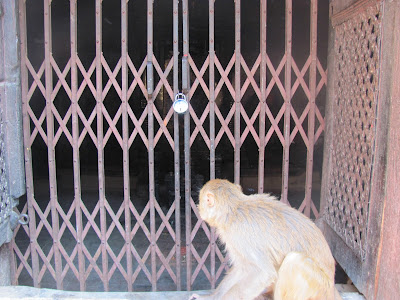Way back in October I mentioned the multilingual inscription on Hanuman Dhoka that dates from the reign of King Pratap Malla in the 17th century. A friend of mine pointed me to this recent article from My Republica:
Lost in Translation
Though all the languages are yet to be deciphered and the entire meaning is yet to be interpreted, Gautam Bajra has decrypted bits and pieces of it in his book. And the starting line offers invocation to Goddess Kali...
Rajbhansi, who also served as a script expert at the Department of Archeology for 10 years, informs that till date they have not been able to decipher the Persian script. He believes that the inscriptions don’t carry particular meanings. Apart from it, he says that the English script – AVIOM and NEWINTERLHIVER – don’t make any sense at all. 'King Pratap Malla was a man of high regards, well-versed in fine arts. And as he was a poet, he was decorated with several credentials. So, perhaps to boast of his achievements and mastery of different scripts, he installed the engravings.'”
King Pratap Malla keeps popping up in interesting stories I hear about Kathmandu. He's the guy that built the bullet-shaped shrines Pratappur and Anantapur next to the main stupa at Swoyambhu to help him win a victory over Tibet. Pratappur was hit by lightning in February.
 |
| “This is the first ever instance of lightning striking a world heritage site,” Suresh Suras Shrestha, a section officer at the department of world heritage sites under the DoA said. source |
Shantipur is also in the Swoyambhu complex. In the tunnels below this temple a 1500-year-old holy man is said to exist in a state of immortal meditation. The last man to see him was King Pratap Malla, who ventured down there in 1658, braving bats and snakes and hungry ghosts, to seek his advice in ending a drought that was ravaging the valley.
 |
| At the barred entrance to Shantipur Temple, a monkey wistfully gazes inside and contemplates the secrets within. |
